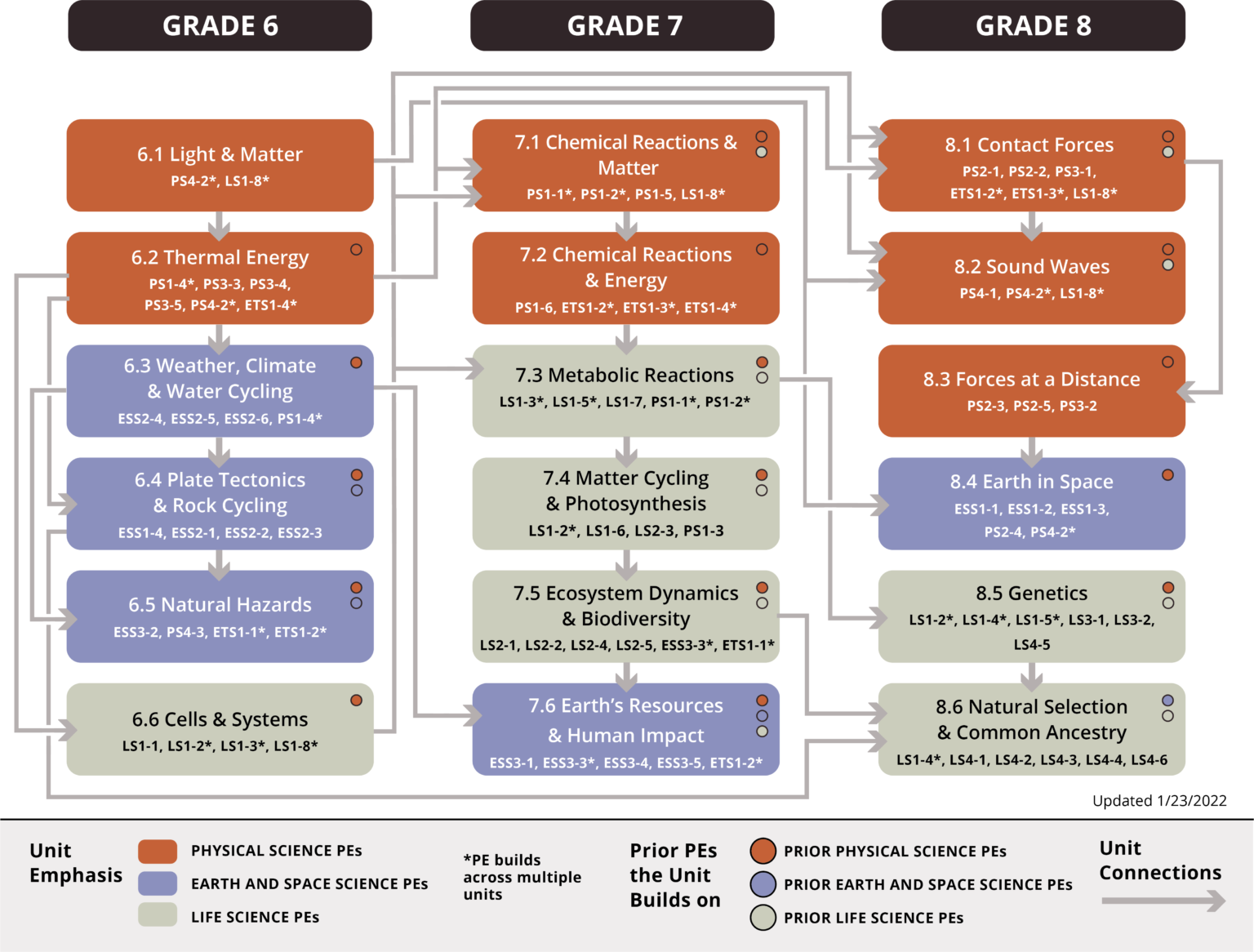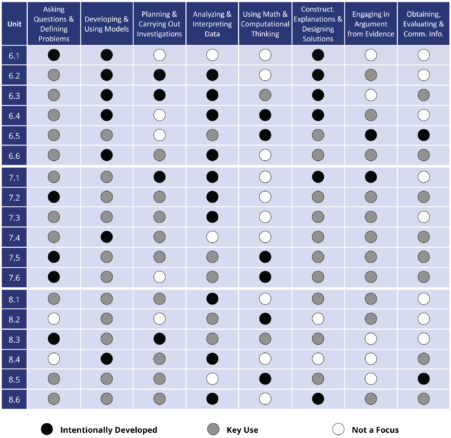This Scope and Sequence articulates how OpenSciEd’s middle school program is organized into bundles of performance expectations (PEs) used to design a target outcome, how the ideas in each unit build on prior learning, and how the three dimensions of the Next Generation Science Standards (NGSS) are reflected in the PE bundles. The arrows show DCI connections between units, indicating that the later unit builds directly on what students figure out about the DCIs in the prior unit. Appendix A of the Scope & Sequence document provides the details for how each unit builds on what students have figured out about the DCIs in prior units.

Defining the Progressions of Science and Engineering Practices (SEPs) and the Crosscutting Concepts (CCCs)
A key innovation in the Framework and the NGSS is that, in addition to supporting students in building the DCIs coherently over the K-12 learning experience, students are also expected to build and deepen their use of SEPs and CCCs as well. To accomplish this, students learn to use the science and engineering practices along with the crosscutting concepts, in concert with disciplinary core ideas, throughout their scientific work in OpenSciEd units. To ensure that these dimensions are just as important to student learning as the DCIs, each SEP and CCC is intentionally developed and then used centrally in students’ science work across the program. This leads to three cases for how a unit can treat each SEP and CCC.
- Intentionally Developed: Structures and supports for both teachers and students are included when it is first used to make sure that students are actually learning them and not just passively using them. Like the DCIs, learning to use the SEPs and CCCs should not happen all at once, so different aspects of the SEP and CCC are developed in different units and grades.
- Key Use: After students have started to build some aspect of a SEP or CCC, OpenSciEd includes intentionally structured opportunities where students are required to use that same aspect in later lessons and later units. We call this Key Use of the SEP or CCC and say that the SEP or CCC is Key to the Sensemaking of the unit. It gives students the opportunity to solidify their use of the SEP or CCC to make sense of phenomena and solve problems.
- Not a Focus: Individual science and engineering practices and individual crosscutting concepts usually work together as students figure out phenomena or problems. As described in the NGSS, “the eight practices are not separate; they intentionally overlap and interconnect” (NGSS, Appendix F, p. 3). Consequently, each unit contains many more cases where students use the SEPs and CCCs than those identified in the target PEs or in the lesson-level performance expectations. These additional uses of the SEPs and CCCs are not a focus of the unit learning, but students may apply these practices or concepts to accomplish the goals of their work in a lesson.
To read more about the Middle School Science Curriculum’s Scope and Sequence, including the summary of the heuristics used to construct the sequence, download the document below.
Unit Length
The following document shows the length of each unit in the program. Unit pacing is based on one day being a 45-minute class.



